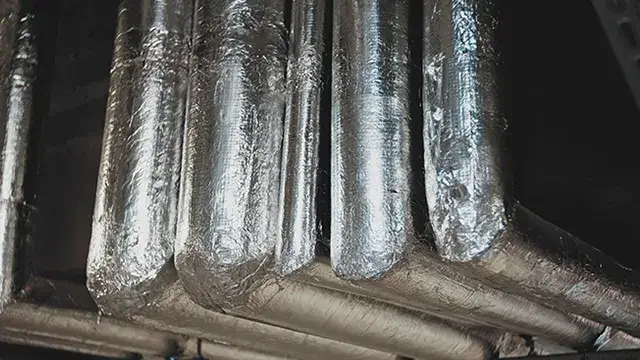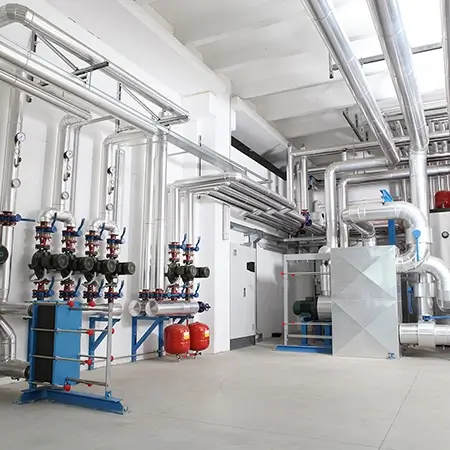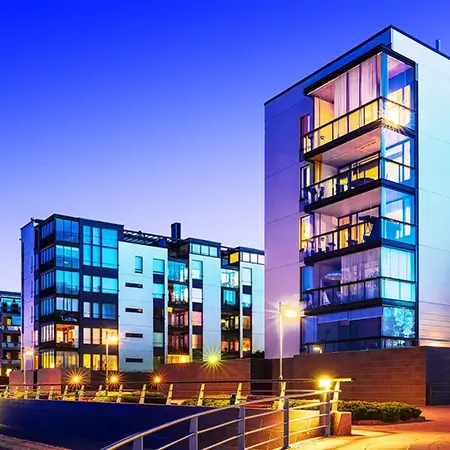Use Case: Exposed Pipe Leaks
87% of Escape of Water (EoW) claims can be attributed to faulty pipes
Water pipe leaks are more likely to occur in basements and utility rooms of commercial properties where there are many more connections and joints.

Maintenance challenges can lead to catastrophic water damage
Despite the fundamental principles of plumbing within commercial and domestic properties being the same, the increased risk of water loss and the resulting damage is increased exponentially within commercial buildings such as hotels, offices or multi-unit housing. Due to the larger size of commercial properties, density, pipework complexity and increased water pressure within taller structures, pipes are more susceptible to leaks. This damage is only accelerated by corrosion, poor maintenance, and irregular building occupancy. As water leaks frequently start small and get bigger as the problem advances, it can be challenging for maintenance to detect the early signs of a gradual but increasingly catastrophic leak.
However, tight spaces such as access corridors, maintenance and utility rooms obscure a leaks warning signs, making it visually difficult to detect a leak early. Additionally, the geometry of these spaces makes it challenging to install traditional rigid form factors. At LAIIER we have addressed these gaps with a LoRaWAN water leak detector that is easy-to-install, physically conformable and precise.
Market opportunity
- There are 5.9M commercial properties in the US.
- Commercial building construction market share was US$221.1B in 2021.
- In the last 5 years, commercial properties have seen a 15% increase in maintenance costs.
- Average commercial properties are 19,000ft2 and have maintenance costs of US$53,200 per year.
- Damage directly attributed to water loss costs insurance companies over US$2.5B a year.
- 87% all Escape of Water claims come from burst or leaking pipes.
- The average cost of a commercial EoW claim increased by 22% between 2016 and 2018, from £4,167 to £5,349.


Strong growth in commercial property construction
The hotel construction industry, as a significant portion of commercial buildings, grew rapidly between 2017 and 2019. Despite the industry slowing in 2020, there was a 20% increase in hotel construction in 2021 with a market share of US$20.87B. Hotels are responsible for around 15% of the water consumption of commercial properties in the US.
Additionally, offices have seen increased maintenance costs due to a reduction in occupancy as a result of COVID-19, promoting corrosion within pipework. To combat these costs, smart building technology is favored and this market is predicted to grow to US$265.27B in 2028 at a CAGR of 21.6%. This offers huge potential for integrated smart sensors within commercial properties to monitor water loss and mitigate damage.
In the US, purpose-built student accommodation has been rapidly growing in recent years with 78% of the student housing market constructed in the last 20 years. With 63% of student housing in the US consisting of private rooms rather than shared rooms or apartments, there is an increased number of plumbing fixtures required in high-density purpose-built student accommodation.
Every pipe material is susceptible to leaks
Burst pipes and damaged plumbing are the most common source of water damage in commercial buildings. With the higher footfall and denser occupancy of large commercial buildings and multi-unit housing, plumbing has a much faster rate of deterioration. Burst pipes can most commonly be attributed to corrosion, unnecessary water pressure and rapid changes in temperature. In the last 100 years, pipe materials have improved in quality and effectiveness, damage from temperature fluctuation, weak joints and cracks. However, with the high pressures required in multi-storey commercial properties and continual use, there are weaknesses that each material is susceptible to. Common materials include:
Steel
Steel pipes, although uncommon, were used in older properties before it was discovered that lead pipes were toxic. These can be prone to internal rust, furthermore when in contact with high pressure water, its zinc lining can break down, causing blockages in the water supply.
Copper
Copper can be costly and despite its resistive qualities, it is still prone to corroding over long periods of time, this means many older properties that have copper piping will see more frequent leaks. Common issues with copper piping can include its susceptibility to pinhole leaks from temperature fluctuation.
PVC
Polyvinyl chloride (PVC) is a low-cost material that has become extremely common in both domestic and commercial plumbing. Despite easy installation and cost-saving, it is easily damaged and is often cracked or weakened at joints due to the deterioration of the adhesive. Exposure to extreme temperatures can result in pipes easily being breached if water freezes.
LAIIER's solution: A scalable, low-cost sensor
The scale and density of plumbing systems within commercial properties require much higher levels of maintenance, with pipes often placed in spaces with limited accessibility. What often starts with small and undetectable leaks can develop into burst pipes with costly damage and insurance claims. Mitigating costs through the application of LAIIER's flexible and ultra-thin sensors allows for the early detection of leaks and offers an ability to monitor areas that would usually be inaccessible to maintenance teams.
The seamlessly integrated Surface to Cloud™ platform on our LoRaWAN® leak detectors makes it possible to receive real-time data on a computer or mobile device. As LAIIER's LoRaWAN leak detectors are low cost and can be placed onto pipes like stickers and tape, our solution is easily scalable to the needs of commercial properties of any size. These qualities are essential for building owners or facility managers to install, maintain and take proactive actions more easily. Gathering data-based insights on these risky areas will also allow insurers to have more confidence in offering EOW policies.